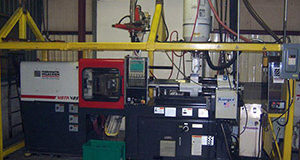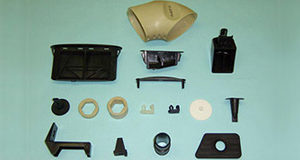These injection presses are highly automated. The press opens the mold. The operator removes the parts from the cavities, often using compressed air to separate the part from the mold. The mold is closed by the press and the fully automated injection cycle begins. A large screw and ram assembly forces preheated uncured rubber through the injection nozzle, through the mold’s runner system, and into the cavities. The uncured rubber is then forced into the shape of the cavity in the mold. The mold remains closed until the rubber is cured. The injection procedure is used for large parts, particularly part with thin walls and large surface areas.
Mold Design and Fabrication
The molds for our customers’ products are designed and manufactured by independent tool shops with proven records of quality craftsmanship. The process of mold design and manufacture is a joint effort between Mid-States and the tool shop to ensure a mold that is durable, works smoothly and produces a quality product.
DOWNLOADS
 IATF 16949-Cert-MSRP (PDF, 331KB)
IATF 16949-Cert-MSRP (PDF, 331KB)





